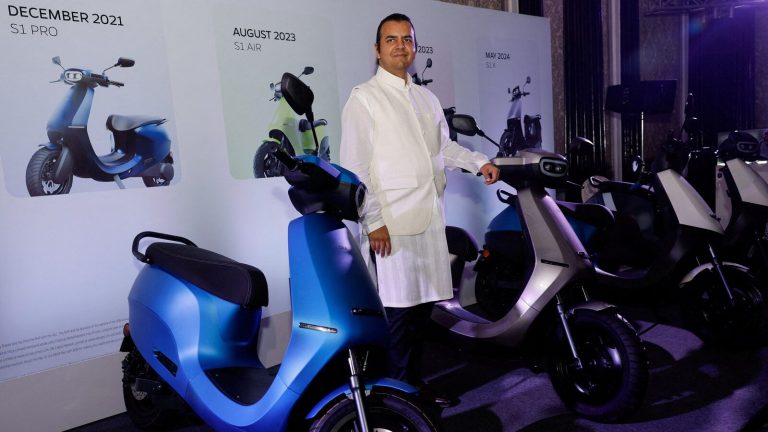New Delhi: Credit rating agency Icra Ltd has downgraded the debt of Ola Electric Technologies Ltd—a key subsidiary of listed Ola Electric Mobility Ltd—after the company’s electric scooter sales dropped sharply in April, raising concerns about continued cash burn and delayed profitability.
The downgrade comes as India’s largest electric two-wheeler maker struggles to defend market share amid rising competition, operational hiccups, and regulatory scrutiny. Icra flagged the company’s slower-than-expected scale-up, elongated cash burn period, and the likelihood of additional fund-raising over the next 12–24 months.
Read this | Ola Electric’s sales collapse in a booming electric two-wheeler market
Sharp slowdown triggers concern
Ola Electric’s vehicle registrations nearly halved in April 2025 to 19,709 units, compared to over 34,000 units a year ago. The Gurgaon-based ratings agency downgraded four credit facilities worth ₹1,887 crore from ‘A (Negative)’ to ‘BBB+ (Negative)’.
“The downgrade of ratings and continuation of the Negative outlook are due to slower-than-expected scale-up in OET’s (Ola Electric Mobility) electric two-wheeler (e2W) sales volumes, which has resulted in a longer-than-expected period of cash burn and has elongated the road to the company’s profitability,” Icra said in a note dated 1 May.
The agency estimates Ola Electric’s full-year losses for FY25 could widen to ₹1,900–2,000 crore, up from ₹1,600 crore in FY24. In the December 2024 quarter alone, the company posted a net loss of ₹564 crore, compared with ₹376 crore a year earlier.
Founded by Bhavish Aggarwal in 2017, Ola Electric began rolling out its scooters in December 2021. Backed by investors such as SoftBank, Edelweiss, and Tiger Global, the company sells and registers vehicles primarily through Ola Electric Technologies, its most crucial subsidiary among ten group entities.
Despite its early success—capturing 52% of the e-scooter market by April 2024—Ola has faced headwinds in recent months. Icra highlighted that intense competition from rivals such as Bajaj Auto, TVS Motor, and Ather Energy would require higher investments, potentially straining its credit profile further.
“The company’s operating margins have continued to be negative, with operating margin (OPM) for 9MFY25 at -26.7% compared to -22.7% in FY24. The ability of the company to reduce operational losses and eventually turn profitable would remain a key monitorable,” the note said.
Ola Electric sold 344,009 units in FY25, a modest increase from 329,947 units in the previous year.
Read this | Maharashtra orders shutting down of 121 unauthorized Ola Electric stores
Since the start of the year, Ola Electric’s share price has fallen by 44% as against a 4% fall in Nifty Auto.
Regulatory heat and customer complaints
In February, the company terminated contracts with two registration agencies, disrupting scooter registrations. Although Ola claimed it sold 25,000 vehicles that month, only about 8,500 were registered, prompting scrutiny from the Ministry of Road Transport and Highways, the Ministry of Heavy Industries, and the Securities and Exchange Board of India.
Read this | Inside Ola Electric’s showdown with registration agencies
In a clarification to the road ministry, the company explained that around 1,400 confirmed orders for its yet-to-be-delivered e-bike Roadster X were included in February’s sales tally. Deliveries for this model are scheduled to begin in May.
Also read | India’s clean mobility drive hit as electric two-wheeler subsidies miss target in FY25
Meanwhile, several customers have taken to social media to complain about delayed deliveries after full payment. A Mint check at seven stores across Delhi, Mumbai, and Bengaluru found that delivery timelines had stretched to 20-45 days due to the registration delays.



